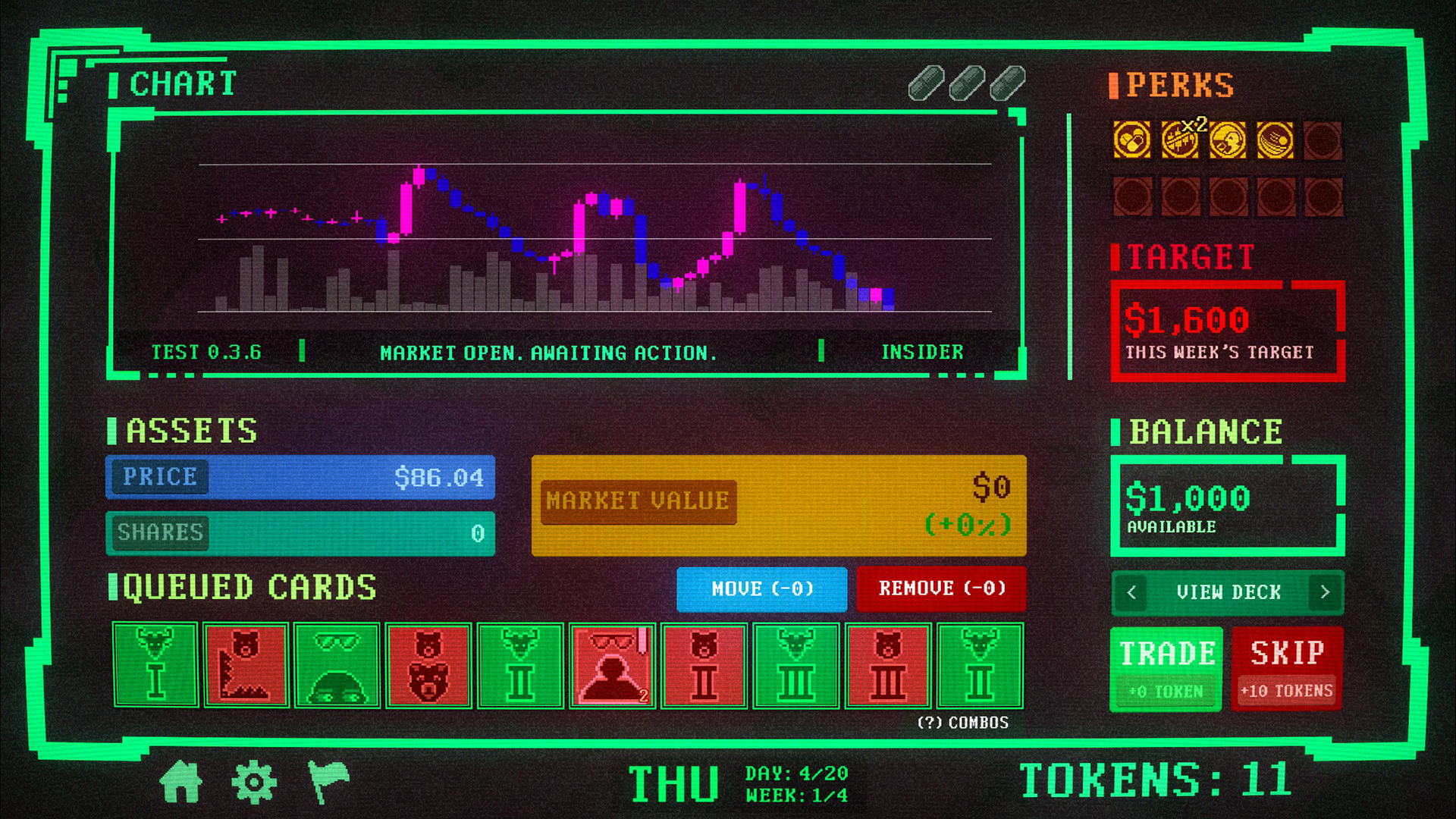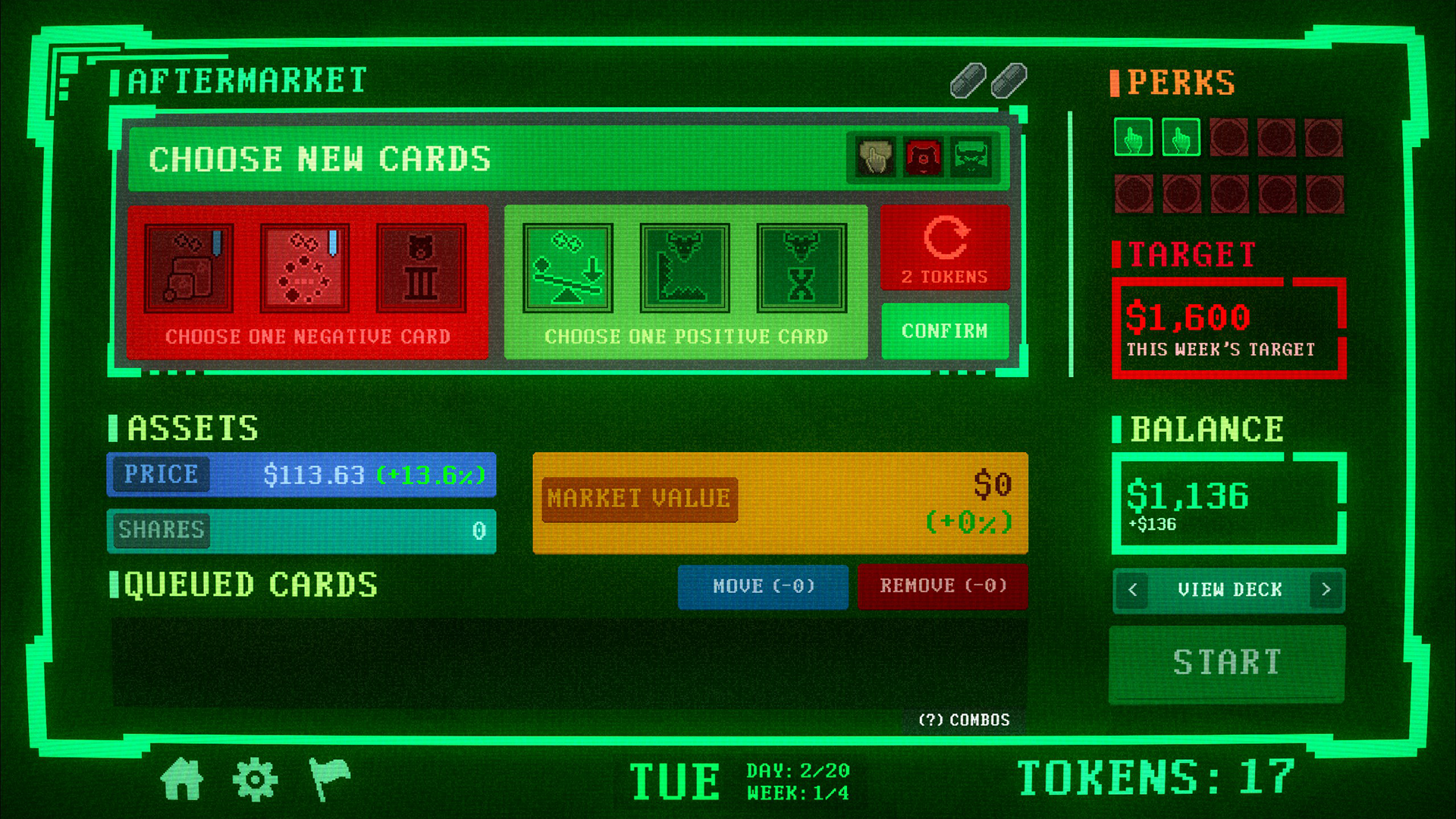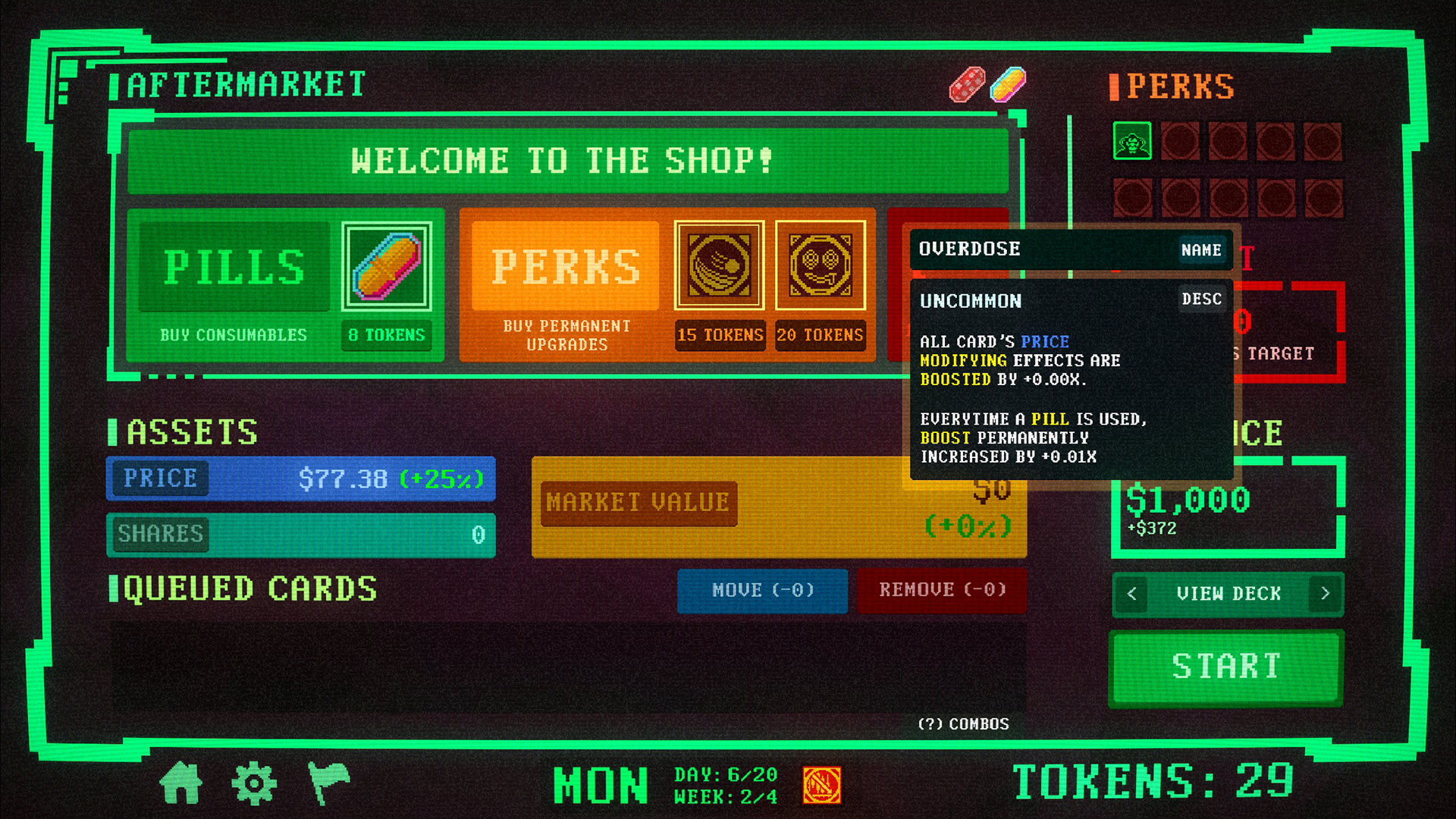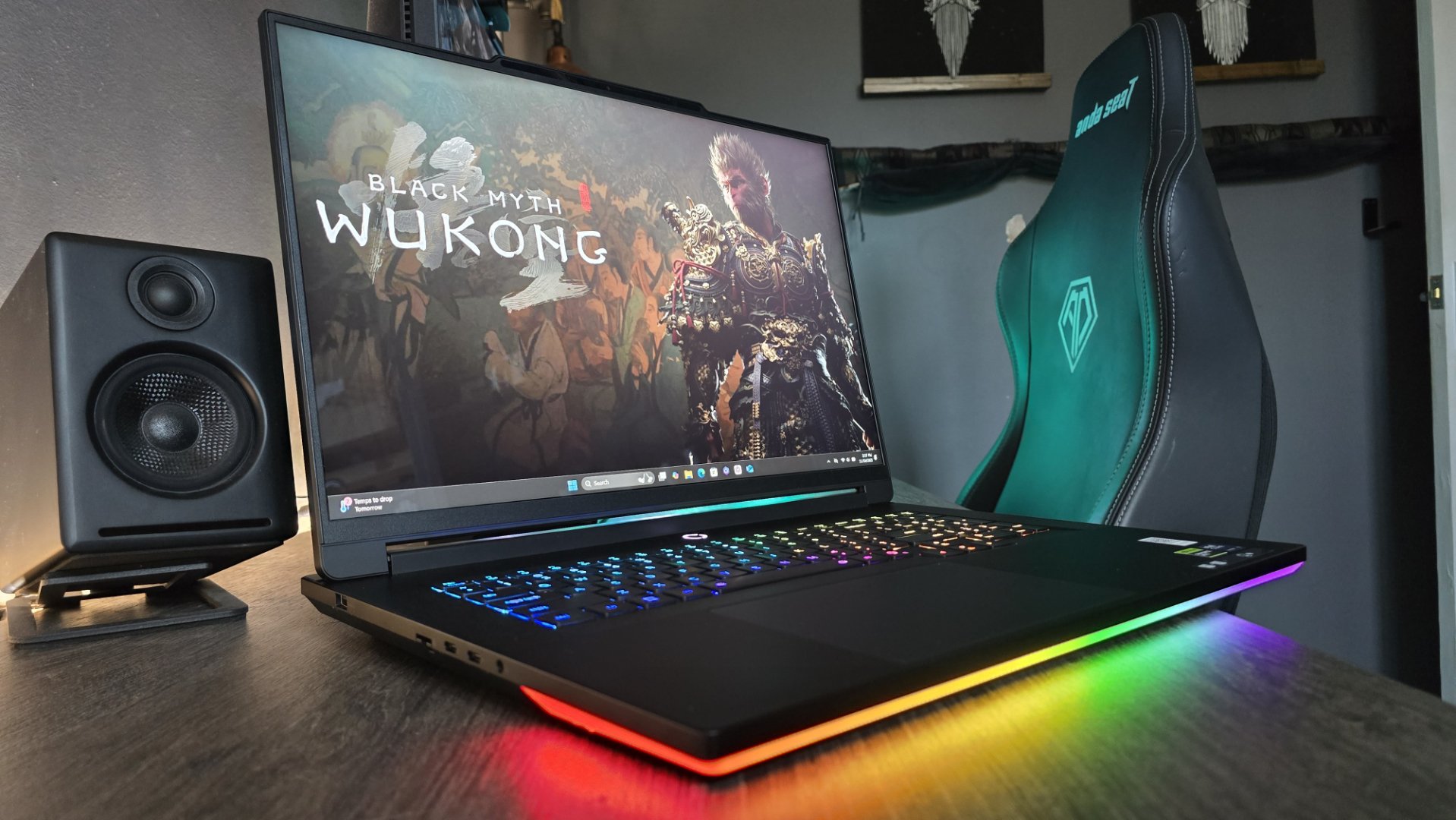This Balatro-inspired stock-trading roguelike marks the first time I've ever screwed up in a deckbuilder by making my deck too good
Insider Trading has some hard lessons to teach about making the numbers go up.

Insider Trading seems deceptively simple at first. The structure is reminiscent of Balatro, but with a week of stock trading instead of a series of antes. Each day, you draw a row of cards from your deck, which will influence the rise and fall of the price of stocks by activating in order. After a limited bit of rearranging of the order, you can decide whether to buy or sit out.
Buy, and you'll invest all your money into the stock, let the cards play out, and then sell it—hoping its value at that stage is higher than when you started. Then it's time to add two cards to your deck—a red one, with an effect that hurts the stock price, and a green one that boosts it.
Your goal is just to make enough money to hit your target for the week. So it's easy, right—you just need to keep pushing the stock price higher each day to make your profit, finding ways to thin the red cards out of your deck and buff your green cards, and you'll make more and more money and always hit your targets. Simple.
Stacking up a bunch of different synergies, I soon had prices climbing to an absurd $10,000 per stock while I raked in the profits.
The more financially literate among you may already see where I started to go wrong here. You see, the stock price doesn't reset between weeks—it just stays wherever you last left it. What does reset is how much money you have available to invest each week. Keep trading like I did, chasing ever-escalating profits, and you end up pricing yourself out of the market.
So… perhaps a bit less Balatro-like than I expected. Instead of pushing the numbers as high as they can possibly go and giggling to myself, it turns out I need to embrace balance.
Those red cards I tried to weed out of my deck are actually crucial. You need days where you skip the trade and crash the stock price as far as you can to get it low enough for another profitable rise later in the week.
Keep up to date with the most important stories and the best deals, as picked by the PC Gamer team.
The resulting strategy is pretty mind-bending, and not quite like anything I've run into in a roguelike before. Striving for success but not too much success, managing the winds of fate to blow against you and for you in turn… it's a really complicated strategic puzzle, only made more tangled by increasingly strange synergies between cards, purchasable perks, weekly market effects, and consumables.
It's really dense and interesting, but it is also pretty intimidating. The counter-intuitive process of pushing for profit and crashes at the same time isn't remotely beginner friendly, and even as someone who's been playing roguelikes pretty regularly for about 15 years, I'm struggling to make headway past the game's first couple of weeks.
But what it loses in accessibility, it certainly gains in depth, and I'm finding it a really fascinating take on the genre so far. I don't know how many times I'm going to have to crash the economy before I get to grips with it, but I'm not giving up yet.
You can try Insider Trading for yourself right now, thanks to a free demo available on Steam. The full version is planned to release early next year.

Formerly the editor of PC Gamer magazine (and the dearly departed GamesMaster), Robin combines years of experience in games journalism with a lifelong love of PC gaming. First hypnotised by the light of the monitor as he muddled through Simon the Sorcerer on his uncle’s machine, he’s been a devotee ever since, devouring any RPG or strategy game to stumble into his path. Now he's channelling that devotion into filling this lovely website with features, news, reviews, and all of his hottest takes.
You must confirm your public display name before commenting
Please logout and then login again, you will then be prompted to enter your display name.





